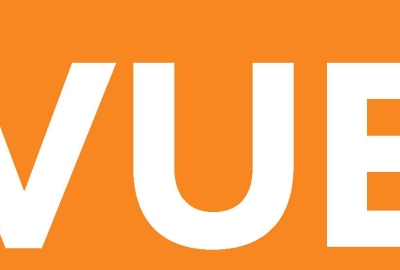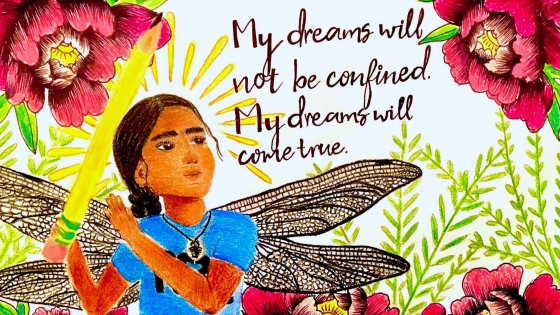
Separation and Healing: A Journey Toward Restoration and Recovery in Education
A month before we were set to publish, there was a very different introduction to this issue. In that other version, we wrote briefly about certain structural conditions in this country, and how the divisions created and upheld by those conditions unfold in our schools. We spoke about how schools can in some ways serve as microcosms of different corners of the American tapestry and be seen as social conditioning mechanisms that accustom students to what the dominant culture expects of them, in particular the learned expectations of deficit and failure transmitted to the students in our most underfunded and underserved schools.
Over the past several years, the spectrum of how human life is valued has been in vivid and horrific detail through video, photographic, and journalistic display. From detention camps to police bodycam footage, evidence abounds in our society of how costly the deep social divisions are to those most targeted by those divisions, along intersectional lines of race, gender, language, sexual identity, economic security, religion, national origin, and dis/ability. In turn, we see echoes in our educational system of these products, from the misidentification and mis-servicing of multilingual students and students with disabilities to the hyper-surveillance, hyper-discipline, and hyper-exclusion of vulnerable students, sequestering or secluding them from the traditional classrooms made accessible to their peers.
But that other introduction, the one that dove a bit more deeply into those issues and others of their kin, while relevant, was disrupted by the current crisis in which we find ourselves. The novel coronavirus known as COVID-19 has—upon this writing—disrupted education across the country, sending home students and educators to maintain physical distance. In an issue dedicated to the theme of divisiveness, nothing is currently more divisive than the physical division of students from schools where this has occurred, and the differential impact COVID-19 has had and will continue to have on schools, students, families, and communities.
Some things have been revealed in these first phases of our collective weathering of the current crisis. A spotlight has been shined upon how health crises impact families unevenly in ways that exacerbate existing disparities and vulnerabilities within our economic and health systems, and the impact of COVID-19 has exposed and deepened these chasms between the most privileged and the most vulnerable. One pressing example is the inconsistent availability of technology-enhanced educational services for students and families. It raises important and necessary questions about overburdened and under-resourced districts’ ability to continue to uphold their legal and ethical obligations to continue providing educational services; but beyond this, they must also maintain vital and necessary services for students with disabilities, multilingual learners, and those living in the most dire conditions. Each of these previously existing divisions is deepened by the present situation, and as of yet there is little clarity on districts’ long-term sustainability plans for resolving all these issues if remote learning were to continue indefinitely, as appears to be the case in many areas of the U.S., including the nation’s largest school system, NYC. We must remain vigilant in pointing out these pre-existing conditions of disparity and ensure that those who are most neglected by the political, economic, and health care systems are not excluded from the educational system as well, as the cause and continuance of disparity in any one area is inextricably intertwined to them all at the root.
Importantly, however, we have also seen in these recent most uncertain days the resilience of communities, and evidence of communities pulling together to better navigate this new normal. We have witnessed emergent discussions of what Culturally Responsive and Sustaining Education for remote learning can look like. We have seen teachers and systems adapt new ways of teaching and learning, and we have seen families and students push strongly to advocate for access to things many of us take for granted but are more necessity than luxury: stable internet access, reliable and safe access to transportation and food, clean water, enough food and supplies just to continue our daily existence, and affordable quality healthcare. While these basic human needs are universal, the gaps in how they are enjoyed have been laid bare before us, as those gaps have become more visible and continue to widen.
To borrow a principle from physics, every force encounters an equal opposing force. The opposing force to the divisions we see is, as laid out in these pages, the force of healing. Healing is what brings us back together, not merely to oppose division, but to examine the wounds, determine their cause, and apply the necessary care, while supplying the air for those wounds to breathe while healing. Bound in this issue are examinations of some of the wounds of division and their root causes, but also hopeful examinations of how they can and do heal. The pages themselves, laid out before you, provide the air for them to begin to heal. Accordingly, we have divided the pieces in this issue thematically into two sections: Separation and Healing.
In this issue of Voices in Urban Education, our contributing authors examine a variety of the divisions they have witnessed, studied, and contemplated in urban education. In the first section of this issue, titled Separation, are three pieces focused on some critical divisions in education. R. Kelly Cameron and Renee McCall take a close look at the experiences of three African-American students in the Massachusetts METCO program. Their examination takes a look at the role dominant culture plays in the decision-making of students of color, including how they confront situations in which they make choices about whether and to what extent they must assert, adapt, or repress their cultural identities, essentially how they must navigate decisions about whether to divide themselves. In her Commentary piece, Gloria Rosario Wallace examines how school leaders can employ “human-centered” systems to confront racism and bigotry in ways that move beyond individualism. Wallace explains how such systems can center not only humanity instead of division, but also communities and collaborative solutions so that school leaders do not feel like tackling long-standing systemic racism in their school community is a duty they must bear in isolation. Finally, Jessica Cardichon and Linda Darling-Hammond examine some of the most substantive and harmful changes to federal disciplinary guidance on disproportionality that occurred in the transition from the previous presidential administration to the current one, including the loss of important and even critical protections for some of our most vulnerable students, including transgender and dis/abled students, and the loss of guidance on zero-tolerance policies, practices which have been proven particularly harmful to already vulnerable students.
On the flipside of this divisiveness, the second half of this issue examines Healing. In their piece, Jane Quinn and Martin Blank take a long-term and macroscopic view of community schools and provide ten essential lessons learned, including what community schools have gotten really right and how they provide an important perspective into debates on school reform and school choice. In an interview with us, Nellie Mae Senior Program Officer Delia Arrellano-Weddleton has given important insight on how racial equity has become a focusing lens for the philanthropic work of the Nellie Mae Foundation and how her own experiences and background influenced her path and direction. Finally, in the piece that inspired the title of this issue, Lyrica Fils-Aimé examines the role of the “equity warriors”: those who do the ongoing groundwork of identifying, confronting, challenging, and uprooting racism and white supremacy. She digs deeply into the emotional and psychic toll such work takes, reminding us that we are not machines and cannot expect to do this challenging work without being affected and risk becoming (re)traumatized by it.
The student artwork contained herein also supplies a crucial balance of voices, full of both pain and promise, hurt but hopeful, to ground these discussions in the issues most pressing and pertinent in their lives. In these pages, they tell us in images and emotions what separation means to them; yet, they also give us a sense of how to heal. It is our hope that these voices resonate as powerfully as any in this issue, and that together these images of Separation and Healing remind us of the importance of equity in all our work and the humanity of all those touched by it.
In these times, more uncertain than ever, we center ourselves and our work upon exposing separations and giving them air to breathe, so that together we may find the healing that awaits on the other side. We hope you enjoy the small voyage through a process that this issue and its contributors have collectively brought to you.

